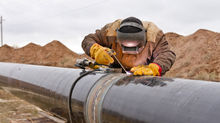10-Year Non-Sacrificial Lubricious Coating
- Ionyx Coatings
- Aug 4, 2017
- 3 min read
Standard lubricious coatings and treatments do everything but break the Gordian Knot of complications surrounding the development of long-term lubricity and joint protection. Erratic friction leads to weak, failed joins and difficult replacement - thus, the need for consistent lubricity. Exposure to oxidation and aggressive corrosion environments require strong adhesion and protection. Recently developed high-performance nanocoatings NanoCeramic coatings demonstrate great promise to achieve where others had failed.
For example, oils, waxes and other treatments provide temporary fixes too weak for industrial environments; electroplating is unsuitable, cadmium is toxic, and zinc is particularly notorious for uneven, unpredictable results. Every hard film researched prior to the writing of this article encompasses some resin-, plastic- or carbon-based coating or nanocoating enhanced by the addition of friction-reducing agents. The “sacrificial lubricity” of these products is equally disappointing, a marketing spin on the fact that lubricious properties remain in coating particles that chip or flake off surfaces as the coating degrades due to the weaknesses inherent to resins such as simple mechanical adhesion and natural oxidation reactivity.
In high-stakes industrial environments, reliable, consistent lubricity is essential to ensure easy assembly, joint integrity and component reusability in high-demand high-liability, critical-use applications and environments, while implementing durable protection is important to long-term performance and asset preservation. The economic and maintenance advantages of replacing costly sacrificial lubrication with better performing, permanent protective lubricious coatings are both obvious and inspiring.
Lubryx, a uniquely innovative NanoCeramic lubricious coating, definitively cuts the Gordian Knot. The silicon-based, non-sacrificial coating features a comprehensive list of protective properties for consistent, long-term friction reduction and corrosion protection in critical joins. Though still in the final stages of beta testing, Lubryx is already exceeding industry expectations for strong, reliable defense against seizing, galling and oxidation.
The NanoCeramic coating comprises a range of core features, the more pertinent being: air or heat curability, ability to fill microscopic pits and voids for high coverage without appreciable load, UV stability, non-reactivity and non-conductivity.
The specific formulation of Lubryx integrates friction-reducing components directly into its ceramic chemistry (the bones of its molecular structure), for non-sacrificial permanence. Consistent lubricity prevents seizing and galling prevention for aluminum, carbon, alloy, and stainless steel, along with other metals. 10 μm thickness results in no overtapping.

The new NanoCeramic technology is based on a ceramic (silicon based) structure that is nonreactive and incredibly durable due to the inherent strength of silicon-oxygen bonds. Such bonds require a huge amount of energy to break; in materials and coatings, this equates to high abrasion resistance and extreme hardness (9H+ pencil hardness, according to third party testing) that do not deteriorate in exposed or aggressive environments. Comprehensive protection benefits include low VOC, water repellency and defense against acid rain, chlorides, solvents, dust, dirt, static, fuels, oils and more.
Upcoming results of formal third-party testing of Lubryx (Salt Fog, Impact Resistance, Tensile Strength, Elongation, Shore D Hardness, Flexibility, Water Absorption, Tear Strength, Fire Rating, Dry Service Temperature and UV resistance) are expected to meet or exceed (previously conducted) other NanoCeramic coatings standard results (below):
ASTM D-3359-09 Adhesion Standard test: 300 hrs. 4B
ASTM D-3363 Film Hardness Taber: 39.11 average
ASTM D-2047 Static Coefficient: Passes ADA requirements oxygen reactivity
ASTM D-2803-03 Procedure B (ISO 4623) Corrosion/Filiform: No Filiform or Corrosion > 1,000 hrs.
E96-10 Water Vapor Transmission; Avg, WVT 0.3473 gr/ft2/hr,, avg, perms 0.8376 gr/ft2/hr.
G155 Xenon Arc, wavelength 340nm Irradiance 1.0 w/m2: 500 hours, slight change
ISO 4623 International Standard Corrosion: No Corrosion
ISO 4623 International Standard Corrosion: No Corrosion
ISO 4628-10, International Standard, Degradation of Coating: No Degradation coated over primer.
















Comments